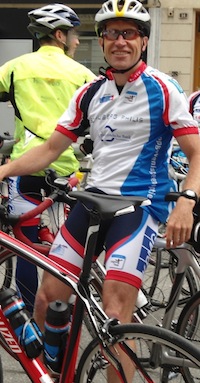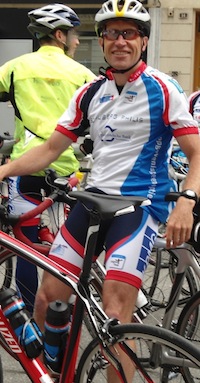I’ve long had this kind of fascination with the placebo effect, it’s like a kind of magic that even grownups are allowed to believe in. In fact, it’s a magic trick so good that you’d considered a bit off if you didn’t believe in it. This being the case I found it a bit traumatic when I first read a review of placebo effects in clinical trials that found that placebo effects were, if real at all, really not very powerful (Hrobjartsson and Gotzsche 2001). This was at a time when I’d recently started down the research road – all inspired and convinced by the ultimate truth-divining machine that is science. It was like my new favourite toy fighting with its immediate predecessor. I didn’t know who’s side to take.
What this experience did was set me down a path of looking a bit more deeply at research into placebo effects. The problem was, that the more I read and thought about all things placebo, the less I felt I could actually nail down what it is that placebos actually are. Perhaps the biggest source of misinformation regarding placebo effects historically has been the tendency to attribute any change after a placebo intervention to the placebo effect. We know however that this is not the case, at least part of this change is due to natural recovery (especially in acute conditions), part will be due to statistical effects, and part is probably also due to various types of bias. The greatest contribution of Hrobjartsson and Gotzsche’s review was to clearly point this issue out. What this did at the same time, was carve a big chunk off what had previously thought of as the placebo effect, and in certain cases not just a big chunk, but the whole lot.
Even if we accept that perhaps placebo effects are smaller than originally thought though, there is still something a bit wrong, and to me this stems from something very fundamental to the whole placebo concept. The issue is that there exists a logical paradox at the very heart of the way placebo effects are conceptualised. We have an intervention that is, by definition, inert (a placebo intervention) which produces an effect which is real (a placebo effect). Now maybe this reflects my own lack of imagination, but I just can’t get my head around an effect that has no mechanism. Surely there must either be no effect (i.e. there is no placebo effect), or the intervention must have a mechanism (i.e. placebos are not inert, but real treatments).
So if there is a placebo effect? Well, then let’s go looking for a mechanism. We already have several leads; there are ideas about physiological pathways via patient expectations, classical conditioning and reduction of anxiety, if there is an effect due to the nature of patient-practitioner interaction then it must be due to some specific psychological mechanism. If interventions, or parts of interventions work via these pathways, then we should investigate how they work so we can use this information to design more effective treatments. It serves no one to consign effects due to these factors to a black box, and call them placebo. For a start, doing so opens up an ethical can of worms for clinicians; is it OK to deliver a treatment you know is inert? It also serves as a conceptual barrier to trying to understand how, and for what, certain treatments might work. From a research perspective, simply assigning the label ‘placebo’ to the control arm of a study also serves no useful purpose because doing so doesn’t tell the reader anything about what contextual factors are being controlled for.
In my opinion, we can leave the placebo effect behind us. We can look back in some years time and see it as a useful crutch we used at a time when our understanding of biology was transitioning from the mystical to the scientific. There comes a time though when crutches no longer provide support, but rather become just another thing we’re lugging around.
So in the end, my life lost a bit of magic and for a time I felt a bit like I’d killed the Easter Bunny. But then I realised that even though I stopped believing in him years ago, it hasn’t stopped me getting chocolate eggs every year.
About Steve Kamper
 Having completed Physiotherapy at USyd and a PhD at the George Institute in Sydney, Steve is currently “working” in Amsterdam at the EMGO+ Institute on an NHMRC fellowship. The thing Steve likes most about being funded by a government fellowship are the endless opportunities to remind mates that they are, in fact paying for every beer he has. Work involves research into the influence of patient expectations on outcome, back and neck pain, outcome measurement and the ongoing search for European conferences to ensure all holidays are tax deductible. Steve likes to spend his spare-time running around next to canals, riding his bike, giving blank looks to people who ask questions in Dutch and making sure he gets at least twice the recommended daily dose of ICECReam (www.theicecream.org/).
Having completed Physiotherapy at USyd and a PhD at the George Institute in Sydney, Steve is currently “working” in Amsterdam at the EMGO+ Institute on an NHMRC fellowship. The thing Steve likes most about being funded by a government fellowship are the endless opportunities to remind mates that they are, in fact paying for every beer he has. Work involves research into the influence of patient expectations on outcome, back and neck pain, outcome measurement and the ongoing search for European conferences to ensure all holidays are tax deductible. Steve likes to spend his spare-time running around next to canals, riding his bike, giving blank looks to people who ask questions in Dutch and making sure he gets at least twice the recommended daily dose of ICECReam (www.theicecream.org/).
References
Kamper SJ, & Williams CM (2012). The placebo effect: powerful, powerless or redundant? British journal of sports medicine PMID: 22893511
Hróbjartsson, A and Gøtzsche PC (2001). Is the Placebo Powerless? An analysis of clinical trials comparing placebo with no treatment. NEJM, 345 (17), 1276-1279 DOI: 10.1056/NEJM200110253451712



